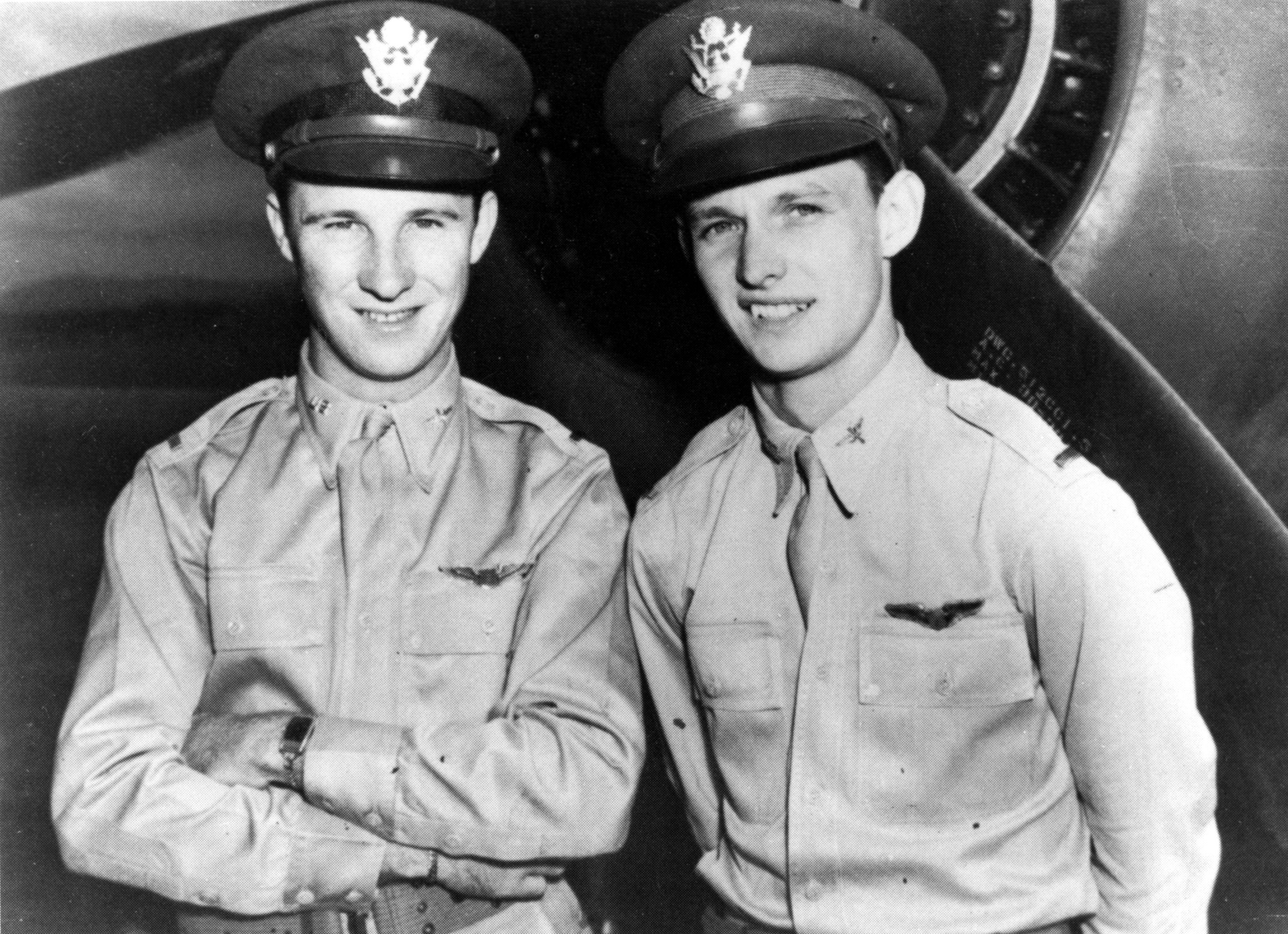The gallant sortie of the battleship USS Nevada was only one example of the many acts of heroism that occurred at Pearl Harbor on Sunday, December 7, 1941. A handful of American pilots also put up a spirited defense against the Japanese and became the first American heroes of World War II.
George S. Welch and Kenneth Taylor, both second lieutenants in the U.S. Army Air Corps, had spent Saturday evening at a dance at the Wheeler Field officers club, followed by an all-night card game some distance away from their home base at Haleiwa. They heard distant gunfire as the pair was discussing the merits of taking an early morning swim and the winner of the final hand was gathering his money. The lieutenants phoned ahead to have their Curtiss P-40 Tomahawk fighters armed and fueled, then hopped into Taylor’s car with machine-gun bullets from planes of the second wave of Japanese attackers kicking up dust around them. They reached speeds of 100 mph during the dash to Haleiwa.
Once aloft, the airmen were ordered to patrol in the vicinity of Barbers Point, and they shot down several Japanese planes before returning to the airfield for more fuel and ammunition. Welch recalled: “We had to argue with some of the ground crew. They wanted us to disperse the airplanes and we wanted to fight.”
One of Welch’s machine guns had jammed. Taylor had been wounded in the arm and leg and was advised not to get back in the air that day. Nevertheless, the two pilots prepared to climb back into the sky. Journalist Blake Clark recounted: “Before Welch’s guns could be unlocked or Taylor’s wound receive first aid, a second wave of 15 Japanese planes swept in….but he and Welch took off immediately.”
The Japanese pilots soon zeroed in on Taylor’s Tomahawk. “Welch, behind them, dived on the one most dangerous to his partner, letting fly with all his guns,” Clark later wrote. “The enemy plane burst into flames and crashed; Taylor escaped. Welch followed another plane seaward, caught it five miles offshore and gave its two-man team an ocean grave.”
A total of five Air Corps pilots managed to get their planes off the ground and give battle that morning. One of them, a lieutenant named Sanders, led a group of planes through overcast skies at 6,000 feet. When a formation of six Japanese bombers was spotted attacking an airfield, the group chased them off. Sanders picked out the Japanese leader and sent the smoking enemy plane spiraling into the sea.
Sanders then spotted a comrade in trouble. Lieutenant James Sterling had closed with an enemy bomber, but another Japanese plane had gotten on his tail and was pouring fire into him. Sanders pulled in behind Sterling’s attacker, and all four planes went into a steep dive. Sanders was the only one to come out. Sterling lost his life, and both Japanese aircraft went down.
One group of Japanese planes, their cargoes of bombs expended, turned to strafe Hickam and Ewa airfields and the naval installations at Ford Island. One of those Japanese pilots saw in the distance an aerial melee that very likely included Welch and Taylor. The Japanese flier reported seeing several of his comrades’ planes falling from the sky in flames. In his definitive account of the Pearl Harbor attack, At Dawn We Slept, Gordon W. Prange noted that the single American airfield to emerge from the battle undamaged was Haleiwa. Some speculated that this was because the Japanese did not know of its existence. More likely, it was because Welch and Taylor aggressively drove off the attackers.
Learn more about
Taylor later recalled: “We went down and got in the traffic pattern and shot down several planes there. I know for certain I shot down two planes or perhaps more; I don’t know.” A total of 29 Japanese planes were shot down during the attack, and Welch and Taylor were officially credited with seven of them, four in their first sortie and three in the second. Taylor later explained his role during the Pearl Harbor strike in testimony before a Congressional joint committee investigating the Japanese attack.
Welch was recommended for the Medal of Honor for his heroism, but it was denied him because his commanding officer said he had taken off without orders. He went on to serve in New Guinea, and one year to the day after Pearl Harbor, he shot down three more Japanese aircraft while flying a Bell P-39 Airacobra. Then on September 2, 1943, flying a Lockheed P-38 Lightning, he shot down four more.
Welch finished the war with 16 victories. He was killed on October 11, 1954, while test-flying the F-100 Super Sabre fighter jet.






